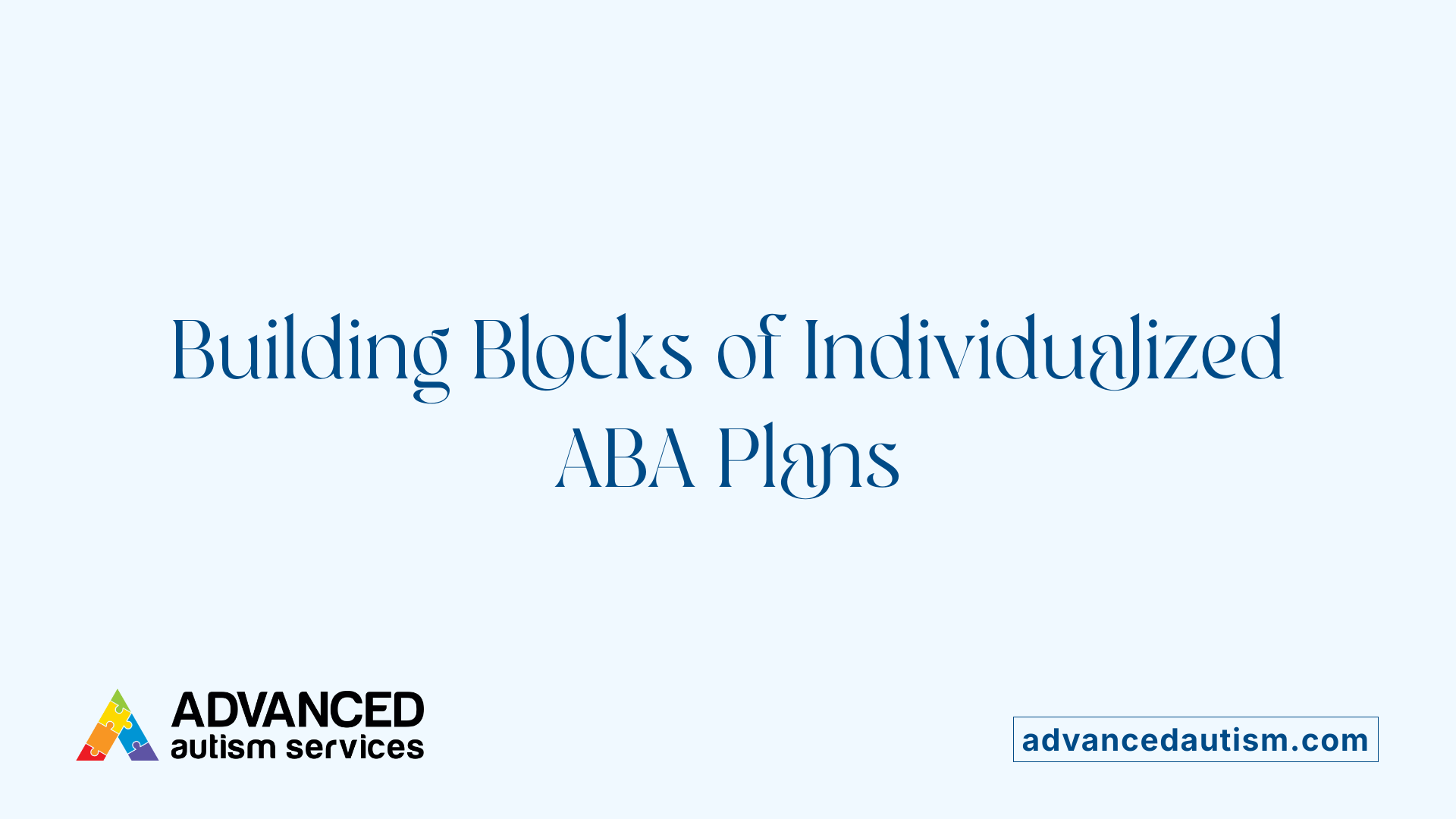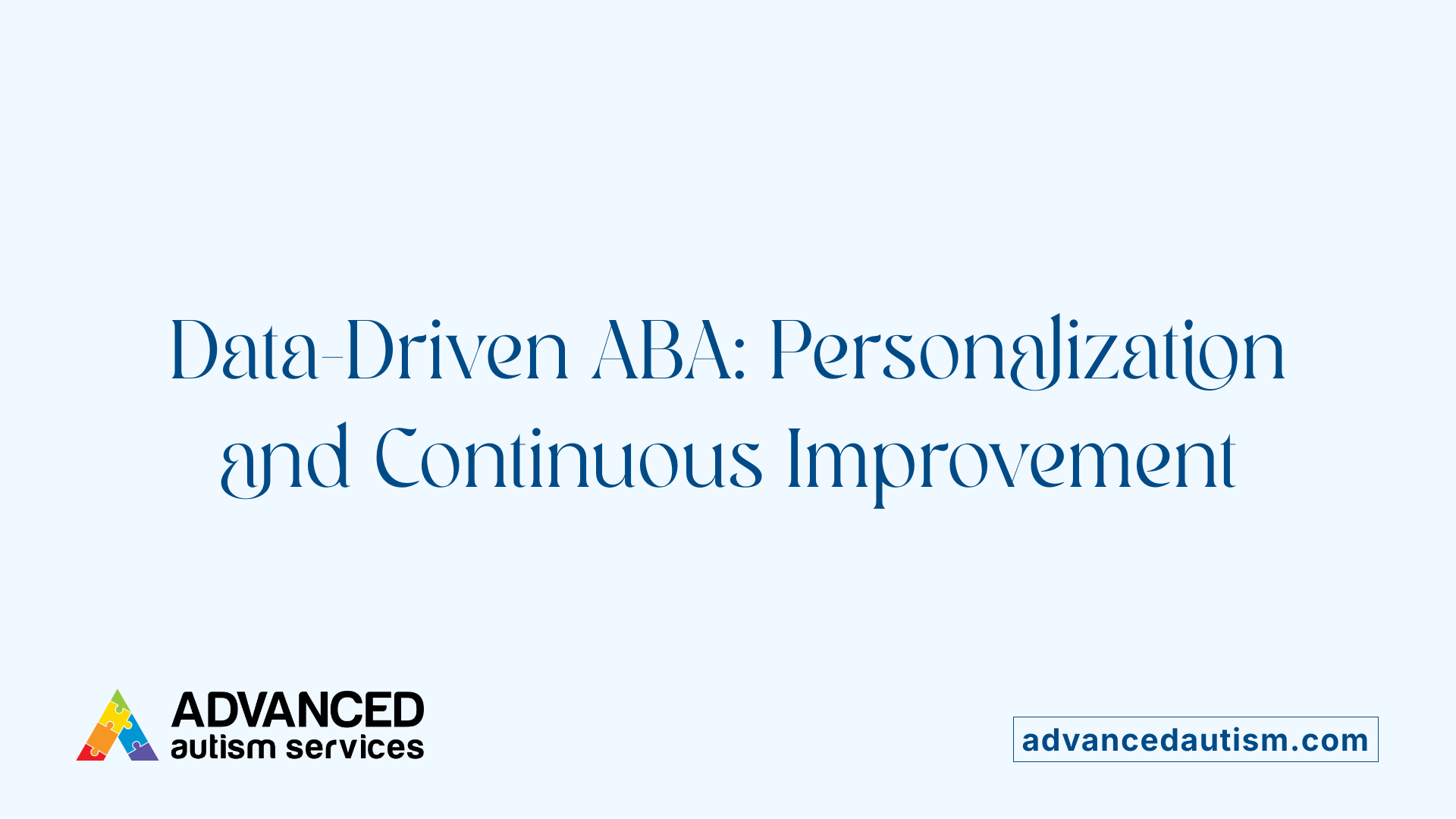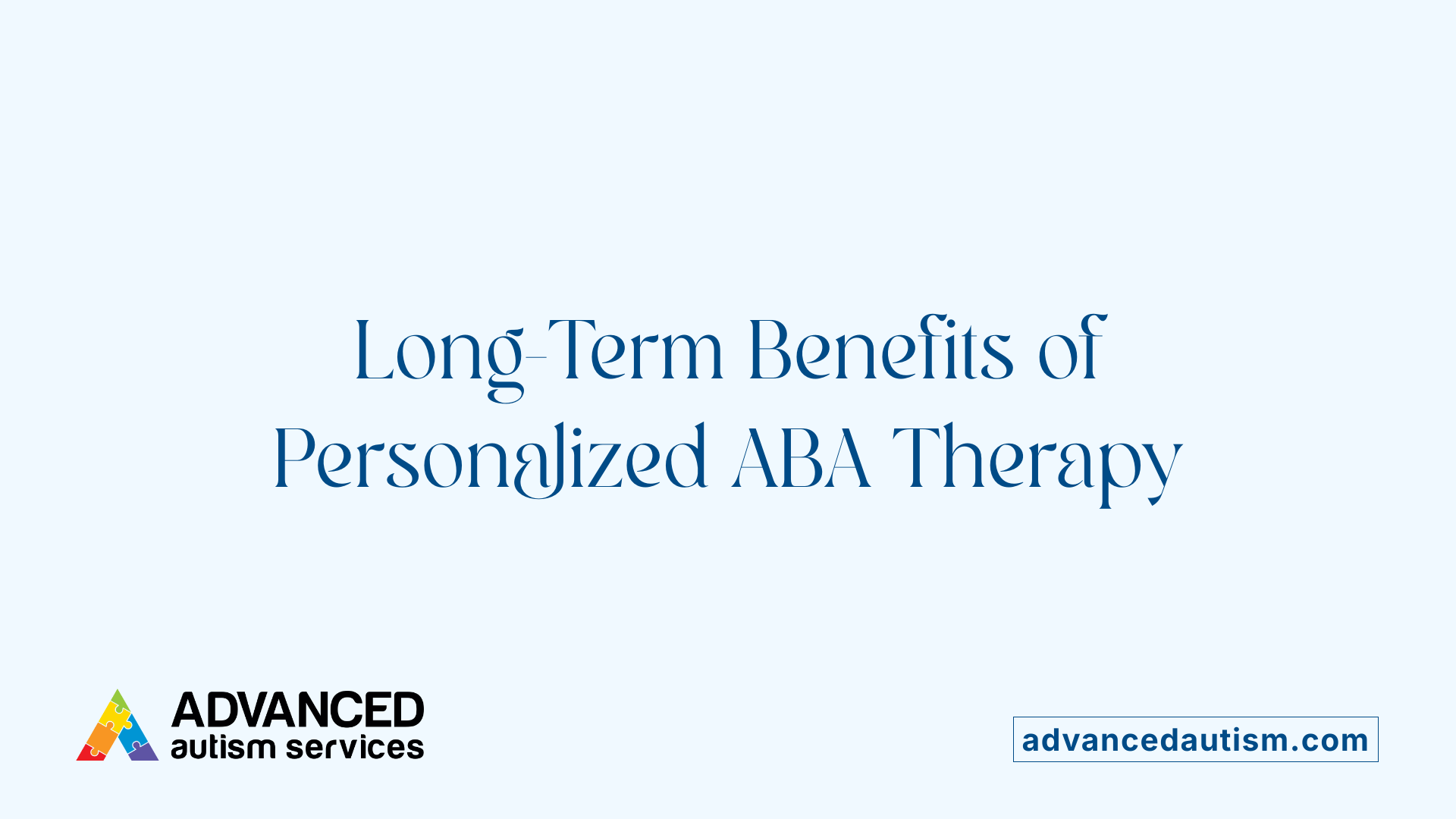Why Individualized Treatment is Crucial in ABA Therapy
Applied Behavior Analysis (ABA) therapy is widely recognized as an effective intervention for children with autism, but its success heavily relies on the tailored approach of individualized treatment plans. These plans are meticulously crafted to meet each child's unique needs, leveraging data, family involvement, and scientific principles to maximize developmental gains. This article explores the significance of personalized ABA treatment, the methodology behind developing these plans, and their profound impact on outcomes.
Crafting Personalized ABA Treatment Plans
 The development of personalized ABA treatment plans for children with autism begins with comprehensive assessments conducted by trained professionals, primarily Board-Certified Behavior Analysts (BCBAs). These assessments utilize a variety of tools, including standardized evaluations, observations, and parent or caregiver interviews, to gain a detailed understanding of the child's unique strengths, challenges, and behavioral patterns.
The development of personalized ABA treatment plans for children with autism begins with comprehensive assessments conducted by trained professionals, primarily Board-Certified Behavior Analysts (BCBAs). These assessments utilize a variety of tools, including standardized evaluations, observations, and parent or caregiver interviews, to gain a detailed understanding of the child's unique strengths, challenges, and behavioral patterns.
Based on this thorough evaluation, specific and measurable goals are established. These goals are designed to be realistic and relevant, addressing core areas such as communication, social skills, daily routines, and behavior management. The plans aim to foster skill development while reducing maladaptive behaviors, ensuring they cater to the individual developmental level of each child.
Strategies incorporated into these plans are grounded in evidence-based practices, specifically Applied Behavior Analysis (ABA). Interventions are tailored to align with the child's natural routines and environment, making the learning process more effective and meaningful.
Family involvement is a critical component, with caregivers actively participating in goal setting, learning management strategies, and implementing interventions at home. Collaboration extends to a multidisciplinary team, including speech therapists, occupational therapists, and educators, working together to support the child's progress.
Progress monitoring relies heavily on data collection, allowing professionals to assess the effectiveness of interventions continuously. Regular reviews and adjustments of the treatment plan ensure that it remains responsive to the child's evolving needs.
Key elements of these personalized plans include behavior management techniques, environmental modifications, and strategies to promote generalization of skills across different settings. Overall, the process emphasizes a structured, data-driven approach tailored precisely to each child's unique profile, aiming to improve quality of life and foster independence.
The Process and Components of Individualized Plans

What methodologies are used to create and implement individualized ABA treatment plans?
Creating and implementing personalized ABA treatment plans involves a multi-step process grounded in scientific methods and thorough assessments. The first step typically includes comprehensive functional behavior assessments (FBAs), which identify the underlying reasons or functions behind specific behaviors. These assessments help determine what triggers or reinforces behaviors, allowing the treatment plan to target these root causes effectively.
Alongside FBAs, skill and developmental assessments are conducted to understand each child's unique strengths, challenges, and current skill levels. This data helps professionals, often Board-Certified Behavior Analysts (BCBAs), develop specific, measurable goals aligned with the child's needs.
Development of these goals usually follows the SMART criteria—making sure objectives are specific, measurable, achievable, relevant, and time-bound. For example, improving a child's ability to communicate needs using functional communication training within a three-month period.
Interventions are then tailored to address individual behaviors, interests, and routines. Evidence-based strategies such as positive reinforcement, antecedent modifications, and skill-building techniques are used to encourage desired behaviors and reduce maladaptive ones. The approach is holistic, often encompassing strategies that integrate naturally into the child's daily environments and routines.
Implementation is an ongoing process requiring meticulous data collection and analysis. Regular monitoring of progress allows professionals to adapt plans swiftly and effectively. This continuous cycle of assessment, intervention, data tracking, and adjustment ensures the therapy remains responsive to the child's evolving needs.
Collaboration with families and other professionals, like speech therapists and educators, plays a vital role in ensuring interventions are consistent across settings and truly tailored to the individual. This collaborative, data-driven methodology maximizes the effectiveness of ABA therapy, promoting meaningful progress and skill development while supporting overall well-being.
The Role of Data in Personalization and Adjustment

How do personalized treatment plans influence the success of autism interventions?
Personalized treatment plans are fundamental to effective autism intervention because they are tailored to each child's unique profile. These plans incorporate detailed assessments, including functional behavior analyses (FBA), to understand individual behaviors, strengths, and challenges. By setting goals based on SMART criteria (specific, measurable, achievable, relevant, and time-bound), therapists can create targeted strategies that address core issues such as communication deficits or maladaptive behaviors.
Advancements in diagnostics, like genetic testing and neuroimaging, support the development of precise, personalized approaches. These modalities help identify underlying biological factors—such as mitochondrial dysfunction or genetic variations—that can influence treatment planning.
Early identification combined with customized ABA strategies maximizes developmental gains and fosters skills in language, social interaction, and behavior regulation. Collaboration among families, therapists, and multidisciplinary teams ensures interventions are consistent, relevant, and adaptable as the child's needs evolve. Overall, personalized plans rooted in detailed assessments and scientific insights yield better long-term outcomes.
Why is data collection integral to the success of ABA therapy?
Data collection in ABA therapy is crucial because it provides the objective basis for measuring a child's progress. Systematic recording of behaviors, skill development, and response to interventions allows clinicians to evaluate what is working and what needs adjustment. This ongoing process ensures that treatment strategies are effective and aligned with the child's current needs.
Regular data monitoring enables therapists to identify trends and patterns that inform goal revision and strategy modification. It also helps in setting realistic milestones and understanding the generalization of skills across different settings. Data-driven decision-making makes therapy more precise, efficient, and responsive.
Furthermore, continuous data collection fosters accountability and transparency among caregivers and professionals. It ensures that the intervention remains focused, targeted, and adaptable, ultimately enhancing the prospects for lasting behavioral improvements and skill acquisition that are meaningful for the child's everyday life.
How does continuous data collection support flexible diagnosis and treatment adjustments?
Ongoing data collection creates a dynamic feedback loop where progress is regularly evaluated against established goals. As new data emerge, professionals can revise treatment targets, refine intervention techniques, and adjust the intensity or focus of therapy sessions.
This flexibility is essential because children with autism spectrum disorder (ASD) often experience rapid developmental changes or respond differently to interventions over time. With continuous data, clinicians can detect plateaus or regressions early and implement timely modifications.
Progress tracking through data also allows in-depth analysis of behavior patterns, helping to identify triggers or antecedents. Based on this information, strategies for behavior management or skill teaching can be tailored further, ensuring interventions stay relevant and effective.
In summary, robust data collection and analysis underpin the adaptive nature of ABA therapy, enabling personalized, responsive, and ultimately more successful treatment plans.
Engaging Families and Promoting Generalization

Why are personalized approaches important for children with autism in ABA therapy?
Personalized strategies are essential in ABA therapy because each child with autism has a unique set of strengths, challenges, preferences, and developmental needs. Instead of using a one-size-fits-all approach, therapists conduct thorough assessments, often including standardized tools and parent or caregiver interviews, to understand the child's specific profile.
This detailed understanding allows the development of tailored treatment plans that focus on individual goals, making therapy more relevant and effective. For instance, one child might need help with communication, while another may benefit from social skill development or behavioral regulation.
Interventions are designed to align with the child's natural environments and routines, making learning more meaningful. Incorporating strategies across speech, occupational therapy, and social skills ensures the therapy remains engaging and adaptable to each child's evolving needs.
Family involvement plays a crucial role in this process. Parents and caregivers participate actively by setting goals, receiving training, and implementing strategies at home. This consistency helps children generalize skills across different settings, which is vital for lasting progress.
Overall, personalized ABA approaches not only enhance the effectiveness of therapy but also improve the child's quality of life. They foster independence, communication, and social integration by providing support that truly matches each child's unique profile.
Enhancing Outcomes through Structured Delivery and Family Engagement
How do in-home services, caregiver training, and team collaboration contribute to successful ABA therapy?
In-home ABA services play a vital role by providing therapy in a familiar and comfortable environment. This setting allows children to generalize learned skills to everyday routines more effectively. Therapists can observe and adapt strategies to fit the child’s natural surroundings, increasing the relevance and impact of interventions.
Caregiver training is essential because it empowers families to actively participate in their child's development. Through guidance and support, parents and caregivers learn to implement therapeutic strategies consistently, reinforcing skills outside of formal sessions. This ongoing involvement fosters a seamless continuum of care and accelerates progress.
Team collaboration involves professionals such as Board-Certified Behavior Analysts (BCBAs), speech therapists, occupational therapists, and educators working together. Regular communication among team members ensures a shared understanding of goals and strategies. This multidisciplinary approach addresses various developmental areas, creating a comprehensive support system for the child.
Together, these elements promote a cohesive therapy experience. In-home services, combined with caregiver training and collaborative teamwork, enhance the child's opportunity to learn, adapt, and develop skills that lead to greater independence and quality of life.
What is the role of BCBAs in creating effective treatment plans?
The role of BCBAs in creating these plans is integral to the effectiveness and long-term success of ABA therapy, improving life skills and independence for children with autism. BCBAs leverage their expertise in behavior analysis to design comprehensive, individualized plans that are tailored to each child's unique profile. They collaborate closely with families and multidisciplinary teams to ensure strategies are personalized and consistently implemented across settings. BCBAs oversee continuous data collection and analysis, making necessary adjustments to optimize outcomes. Their leadership ensures that interventions are evidence-based and align with the child's evolving needs, promoting skill acquisition, reducing maladaptive behaviors, and fostering greater independence.
How does collaboration among families and multidisciplinary teams enhance therapy results?
Family and multidisciplinary team collaborations are fundamental in enhancing therapy outcomes because they foster a unified approach to intervention, ensuring consistency across environments and generalization of skills. Caregivers are trained to implement strategies at home, reinforcing learned behaviors and promoting skill transfer. A team comprising speech therapists, occupational therapists, educators, and behavior analysts provides a comprehensive support system, addressing various developmental domains simultaneously. Regular communication and shared goal-setting facilitate adjustments based on ongoing data, ensuring that interventions remain relevant and effective. This collaborative framework empowers families, maximizes the child's learning opportunities, and promotes sustainable progress in social, communication, and daily living skills.
The Broader Impact of Individualized Treatment Plans

What benefits do tailored ABA therapy approaches offer to children with autism?
Personalized ABA therapy significantly enhances the developmental trajectory of children with autism by aligning strategies with each child's unique profile. These tailored plans are crafted after comprehensive assessments, including functional behavior analyses, which identify specific behaviors, needs, and strengths.
One of the primary advantages is increased engagement. By focusing on interests and natural routines, therapy becomes more relevant and motivating for the child. This structuring accelerates learning in critical areas such as communication, social skills, and daily living activities.
Evidence-based methods like positive reinforcement are central, helping to foster desirable behaviors and reduce maladaptive ones. Continuous tracking of progress through data collection enables clinicians to modify goals and strategies, ensuring that interventions remain effective and relevant.
Families play a crucial role, receiving training and support that promote consistency across environments—home, school, and community. This collaboration helps generalize skills, making behaviors more adaptable and sustainable over time.
Overall, customized ABA interventions not only target immediate behavioral improvements but also support long-term development. They empower children and their families, fostering independence and social inclusion.
Long-term benefits of personalized ABA treatment for autism
Research shows that personalized ABA plans have broad, lasting impacts. These include improved language and communication abilities, stronger social relationships, and better adaptive functioning. Equally important, children learn to manage sensory challenges and develop coping skills that contribute to lifelong resilience.
By focusing on individual goals and providing targeted, data-driven support, these plans help children transition effectively into different environments and life stages. The result is not just symptom reduction but the fostering of autonomy and inclusion, enabling children with autism to lead more fulfilling, independent lives.
Maximizing Outcomes with Personalized ABA Therapy
The implementation of individualized treatment plans in ABA therapy is pivotal for achieving meaningful progress in children with autism. By integrating comprehensive assessments, data-driven strategies, family collaboration, and continuous adjustments, personalized programs address the unique developmental profiles of each child. This targeted approach not only enhances skill acquisition and reduces maladaptive behaviors but also fosters independence and long-term success. As research and clinical practice advance, the importance of tailoring interventions will remain central to improving the quality of life for individuals on the autism spectrum. Overall, personalized ABA treatment is a cornerstone in delivering effective, responsive, and sustainable support.
References
- Does Your Child Benefit from an Individualized Treatment Plan?
- Creating Personalized ABA Treatment Plans: Examples and Strategies
- How to Make Effective Treatment Plans for Behavior Managemen
- The Role of a BCBA in Crafting Personalized Treatment Plans
- The Importance of Tailored ABA Therapy Plans for Your Child
- 10 Components to an ABA Treatment Plan | Your Missing Piece
- Developing and Implementing a Treatment Plan - Special Learning
- ABA Therapy Goals: 25 Practical Examples & Timelines
- Applied Behavior Analysis (ABA) | Autism Speaks



